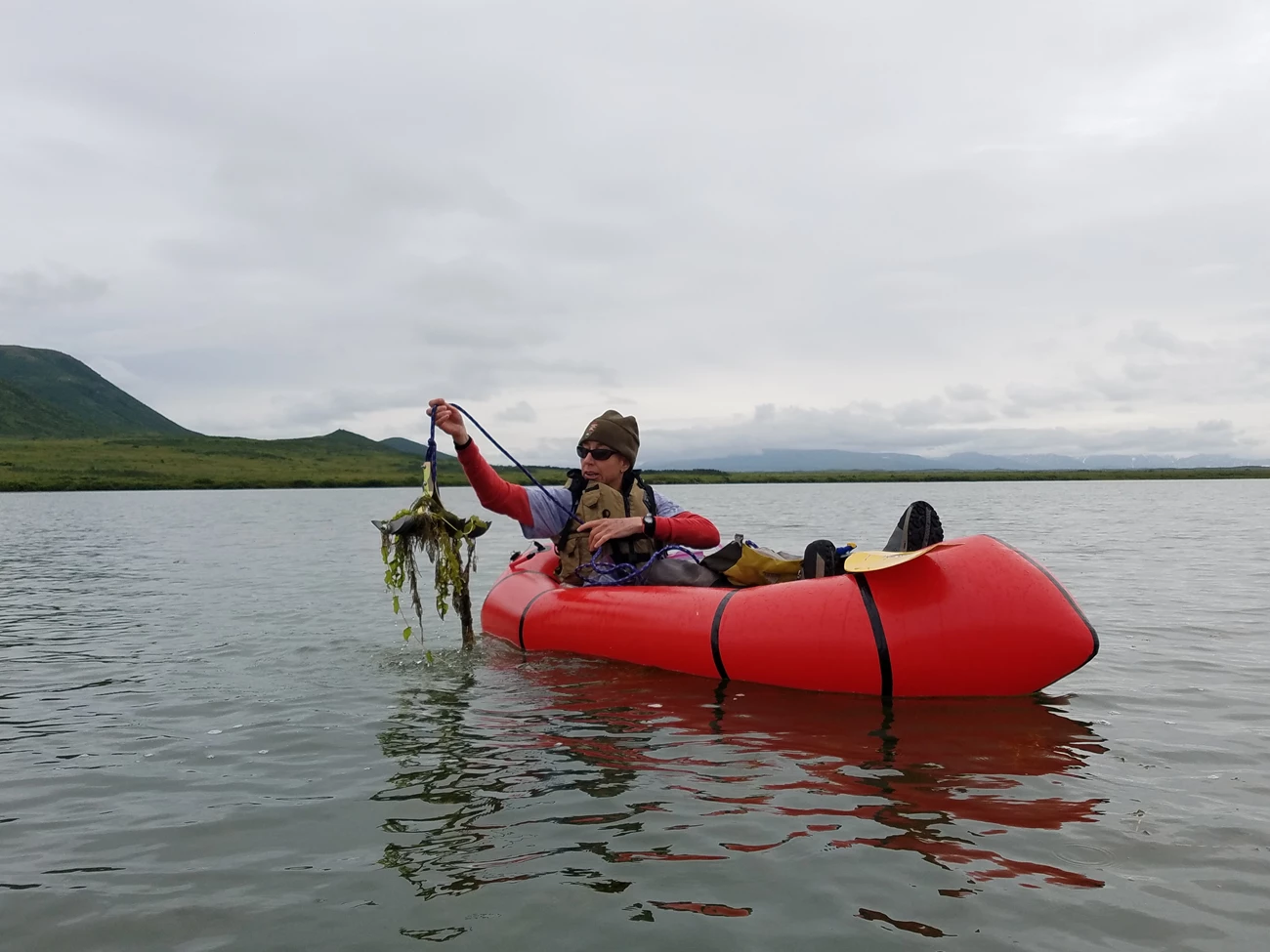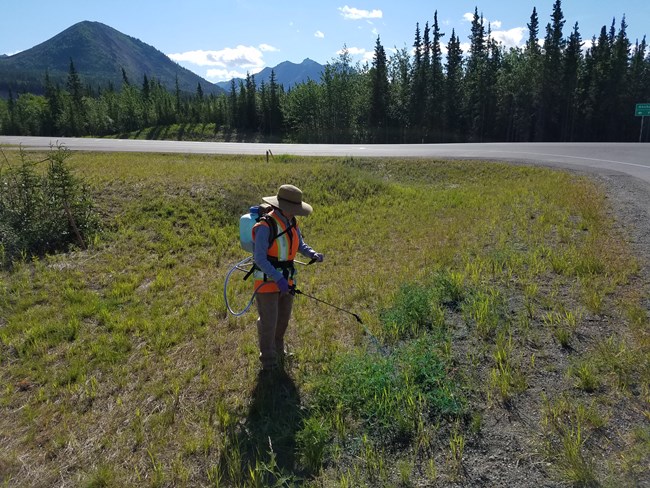
NPS photo.
Alaska Invasive Plant Management Team
The Alaska region takes a collaborative approach to invasive plants. The majority of the field work done in the Alaska parks in regard to invasive plants is done by park staff and internes working with and under the purview of the Invasive Plant Management Team (IPMT). The Alaska IPMT provides invasive plant management assistance to each of the 16 parks in Alaska, covering over 52 million acres of pristine natural areas and wilderness, including coastal fjords, glacial valleys, tundra, and boreal forests. The majority of parks in Alaska contain healthy, intact native ecosystems with very low levels of infestation by invasive plants. Each season, interns, crews, and park staff under the purview of the IMPT work across Alaskan parks, mapping thousands of invasive plant infestations, eradicating small patches, and organizing volunteer events to control larger ones.
Alaska utilizes the Alaska Exotic Plants Information Clearinghouse (AKEPIC) as a statewide database and mapping application for the known invasive plants that have the potential to impact Alaska. AKEPIC also houses a ranking system in which a collaboration of biologists, land managers, and weed scientist have taken the list of invasive plants and utilized a matrix to assign a number to the species to help evaluate the potential invasiveness and impact of these plants to natural areas in Alaska. So far 170 of the little over 400 plants have a rank assigned to them. Altogether, the Alaska IPMT makes the most of its support through an integrated, collaborative approach to maintain Alaska's unique position: ahead of the invasive species risk

Targeted Plant Species Watchlist for Alaska
- Common dandelion (Taraxacum officinale)
- Reed canary grass (Phalaris arundinacea)
- Perennial sow thistle (Sonchus arvensis)
- Oxeye daisy (Leucanthemum vulgare)
- Orange hawkweed (Pilosella aurantiaca)
- Bird vetch (Vicia cracca)
- White and Yellow sweetclover (Melilotus officinalis)
- Elodea - “Canadian waterweed” (Elodea canadensis)
Case Study of Invasive Species Projects in Alaska: Control Effort Successes in the Backcountry at KEFJ & KATM
The Outwash Plain site is located east of the terminus of Exit Glacier and south of Exit Creek in Kenai Fjords National Park and Preserve (KEFJ). Here, nearly 18 gross infested acres of Taraxacum officinale (common dandelion) were first treated in 2011. Getting to the site can be very challenging, requiring wading through braided creek channels, hiking over glacial moraines and bushwhacking through thick alder, willow and cottonwood. Swift water and changing channelization can create dangerous crossing situations that have prohibited accessing the site in some years, leaving the plants untreated. In spite of these challenges, the crew has reduced the overall infestation density to 99 percent since the site was first treated. The parks are now on maintenance of these sites and are able to keep the few plants that come back annually at a level where minimal effort is required.
The Fure’s Cabin site is located within the Bay of Islands in Katmai National Park and Preserve’s backcountry. It is very remote and can only be accessed by boat or floatplane. The crew’s ability to conduct several retreatments throughout the season for the last two years has contributed to the successful control of common dandelion at this site. Overall density of the infestation has been reduced by 99 percent since treatments began in 2011. The parks are now on maintenance of these sites and are able to keep the few plants that come back annually at a level where minimal effort is required.
Partners & Resources
Alaska Invasive Species Partnership
Alaska Exotic Plants Information Clearinghouse (AKEPIC)
University of Alaska Cooperative Extension Service- Insects and Invasives
Alaska Department of Natural Resources- Invasive Plants
Alaska Department of Transportation and Public Facilities-Invasive Species
Alaska Association for Conservation Districts
Bureau of Land Management Alaska - Weeds and Invasives Program
Last updated: February 24, 2022
